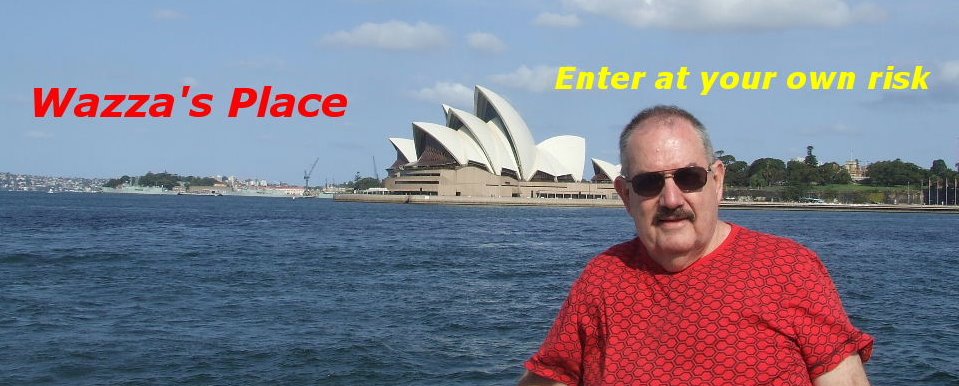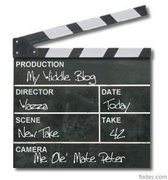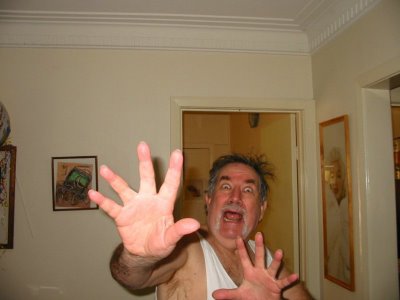Journey to Sydney and Back, Part 3
I've been visiting my daughter, Olivia and two grand
children and have just arrived back home after 10 days.
The Sydney Opera House is located in
South Wales
Utzon, a Danish architect, and is one of the most
distinctive and famous 20th century buildings.
The start of the construction of The Sydney Opera House.
A competition was launched on
The Sydney Opera House under construction.
The Fort
site at the time, was demolished in 1958, and formal
construction of the Opera House began in March,
1959. The project was built in three stages.
Stage I (1959–1963) consisted of building the
upper podium. Stage II (1963–1967) saw the
construction of the outer shells. Stage III consisted
of the interior design and construction (1967–73).
The cost of the project so far, even in October of
1965, was still only $22.9 million, less than a quarter
of the final cost.
The Opera House was formally completed in 1973,
having cost $102 million.
The original cost estimate in 1957 was £3,500,000
($7 million) and the completion date set by the
government was
The Opera House nearing completion.
about 120 metres (388 feet) wide at its widest point.
It is supported on 580 concrete piers sunk up to
25 metres below sea level. Its power supply is
equivalent for a town of 25,000 people. The power
is distributed by 645 kilometres of electrical cable.
The roofs of the House are covered with 1.056 million
glossy white and matte cream Swedish-made tiles,
though from a distance the tiles look only white.
The Opera House is one of the most famous
performing arts venues in the world and is situated
close to the famous
as many touring theatre, ballet, and musical
productions, the Opera House is the home of Opera
A typical afternoon with patrons leaving a concert.
The Sydney Opera House contains five theatres, five
rehearsal studios, two main halls, four restaurants,
six bars and numerous souvenir shops. The five
theatres of the
Hall (with a seating capacity of 2,679), the Opera
Theatre (1,547 seats), the Drama Theatre (544 seats),
the Playhouse (398 seats) and the Studio Theatre (364 seats).
The Utzon Room rebuilt and redecorated to Utzon's original design.
In 1960, the American actor and singer Paul Robeson
climbed on the scaffolding to perform at the
(unfinished) Sydney Opera House while it was under
construction to sing to the workers.
The architect, the Danish Jørn Utzon left the project in
1966 after controversial discussions with the new
government which took over in 1965.
The Opera House was formally opened by Queen
Elizabeth II, on
millions attended. The opening was televised and
included fireworks and a performance of Beethoven's
Symphony No. 9.
The Opera House with
rear of the Opera House.
By coincidence one of my other sisters was returning
from
mother to welcome my sister back home. She was
arriving the day after the opening of the Opera House,
so I was at the opening of the Opera House.
It was a huge opening with thousands of boats, small
and large on the harbour. There were tug boats
shooting huge spouts of water into the air from
their fire hoses. As Queen Elizabeth declared the
building open, thousands and thousands of balloons
were released and a squadron of helicopters and
F111 Fighter Jets roared across the sky.
Peter with the
Opera House in
the background.
Wazza with the
Opera House in
the background.
Island
for difficult convicts.
As early as 11 February 1788 a convict named Thomas
Hill was sentenced to a week on bread and water in
irons on 'the small white rocky Island adjacent to this
Cove'. By 1796 a gibbet had been installed on the
island and convicts who were sentenced to death
were left to hang until their bones turned white.
The most famous of these was Francis Morgan who
arrived in the colony on the Sugar Cane from
in 1793. He had been tried for the murder of a man
at Glassneven in
wearing the murdered man's watch. His sentence was
commuted to transportation for life.
After his arrival here, he was again charged with
murder, having bashed a man named Simon Raven to
death on the north side of the harbour on
By the 1840s the colony, fearing invasion, had
converted the island into a fort and by 1857 the fort
was manned and there were two ten inch guns and
twelve 32 pounders. The guns have only been fired
during ceremonies and on special occasions.
A bit of trivia. There was a movie made in 1959
called “The Siege at Pinchgut” or “Four Desperate Men”
in the
white movie “The Siege of Pinchgut” was made on
location in
than a mile from MGM at Borehamwood in
Aldo Ray played a prisoner on his way to serve a long
sentence who escapes with his younger brother and
two henchmen in a stolen ambulance. They take refuge
on the small
make hostages of the inhabitants - the caretaker, his
wife and daughter.
The Australian film
“The Siege of Pinchgut”
was restored as part of
the Kodak Atlab Project
and is a favourite of
Quentin Tarantino.
Aldo Ray demands from the police an assurance that
he will he granted a retrial, so that he can establish
his innocence, and when it is not forthcoming he
threatens to detonate an ammunition ship in the
harbour by firing at it with an ancient naval gun
situated on the island. The police evacuate the city,
send in sharpshooters who eliminate the accomplices,
then follow up with a wave of frogmen. Eventually,
after a furious battle, the ringleader is shot down
and his brother is led off to jail, having formed a
romantic liaison with the girl hostage.
The beach at Manly, a popular swimming beach.
Situated seven miles north-east of Sydney on the
lower Northern Beaches, Manly was named by
Captain Arthur Phillip after his encounter with the
confident and manly Aboriginal people of the
Kay-ye-my clan who lived here and is surrounded
on three sides by water.
One of the Sydney Ferries that plies the harbour to Manly.
Travelling to Manly from
terminal, Circular Quay, takes 30 minutes by ferry
or 15 minutes by the faster 'Jet Cat' catamaran.
The Corso, a pedestrian plaza and one of Manly's
main streets for shopping and dining, runs from the
ferry wharf and harbour beach all the way across
the peninsula to Manly Beach.
.....................Wazza at Manly Beach.
I was going to continue on with this post to include
the
photos to show and I fear that this post is long
enough, so my next post will include the QVB,
St. Mary’s
Church and some photos taken during our guided
bus tour around the CBD of Sydney.






















11 comments:
To me, the Sydney Opera House is one of the world's most beautiful buildings and up close, especially from one of the Thomas Cook boats, its beauty can be really appreciated.
That's a terrific post about Sydney, Warren, and the photos are beautiful. Pity about the two old guys with the opera house in the background...
G'day Wazza, good to see you got back from Mckay in one piece and even managed a post here!!!! Wow.
Ya can go right off people sometimes cant you? people like Robyn????
Hi Warren ~~ Another great post.
You could write a history or geog book I reckon. The Opera House is
really beautiful, by day or night.
Thanks for all the info. Hope your family are all well. You don't post all that often, but when you do, it's always a goodie !! Take care, my friend, Regards, Merle.
Great post!
Have a wonderful day!
*^_^
(=':'=) huggles
(")_ (")Š from
the Cool Raggedy one
Hi Wazza,
Thank you for stopping by. I finally posted a picture with the help of heirreschild yesterday.
I am a freelance photographer and sunrise / sunsets are my specialty. I find it a great way to start my day.
Thanksgiving was wonderful, low key and totally my family of 20 somethings. My sons girlfriend cooked all day for everyone. She out did herself and sure cooks better than I do.
Have an awesome day. Today is a traditional major shopping day in our country. I will go to the gym, ride my motorcycle and get some beach time in. Tats my kind of day.
Have an awesome day.
Carol
Warren ~ My favorite structure in Sydney was the Opera House. Also it's one of the most recognizable buildings in the world. Good job of covering its history! You and Peter make quite the TEAM! ~ jb///
You did an excellent post here, Warren. Your 'Journey' has been so good and I think this one is even better than the others.
I did give up on you, I hadn't realized you were on another long outing. That is good for you.
Thanks for your visit yesterday and giving me the heads up that you are back.
..
Hi again Warren ~~ How the hell do you say what a Fejoa fruit tastes like. It's not like anything else, but it sure is nice.
Besides, you didn't tell me what that green pie was!! Thanks for your comments
glad you were catching up. It is hard to
keep up with. Take care, Love, Merle.
Very impressive article Wazza, well done!
Wazza,
This is all so very interesting!
The pictures are great to see!
Junie
Some impressive photo my good man. I loved the one of you in the hat. Dapper I say.
Post a Comment